Submitted by
Hexagonal Pavilions Are Hidden Under V-Shaped Roofs That Look Like A Pair Of Bird Wings In Vietnam
teaserd-49-.jpg Architecture News - Jun 04, 2020 - 15:48 2974 views

Paris, Avignon and Ho Chi Minh City-based architecture studio DE-SO has designed hexagonal pavilions that are hidden under large roofs that look like a pair of bird wings in Vietnam.
Named Pavilion Can Gio, the 350-square-metre mini pavilions, consisting of four volumes, functions for multi-purpose facilities, such as conference and seminar meetings, temporary restaurants equipped with professional kitchen facilities, events for large groups and seasonal exhibitions.

The Pavilion Can Gio is situated on a site which is close to Ho Chi Minh City (60 km), this area is also considered as the green lung of the city with its typical mangroves possessing a variety of unique and rare species. Can Gio forest stretches over 75,740 ha land, which gathers about 150 plant species.
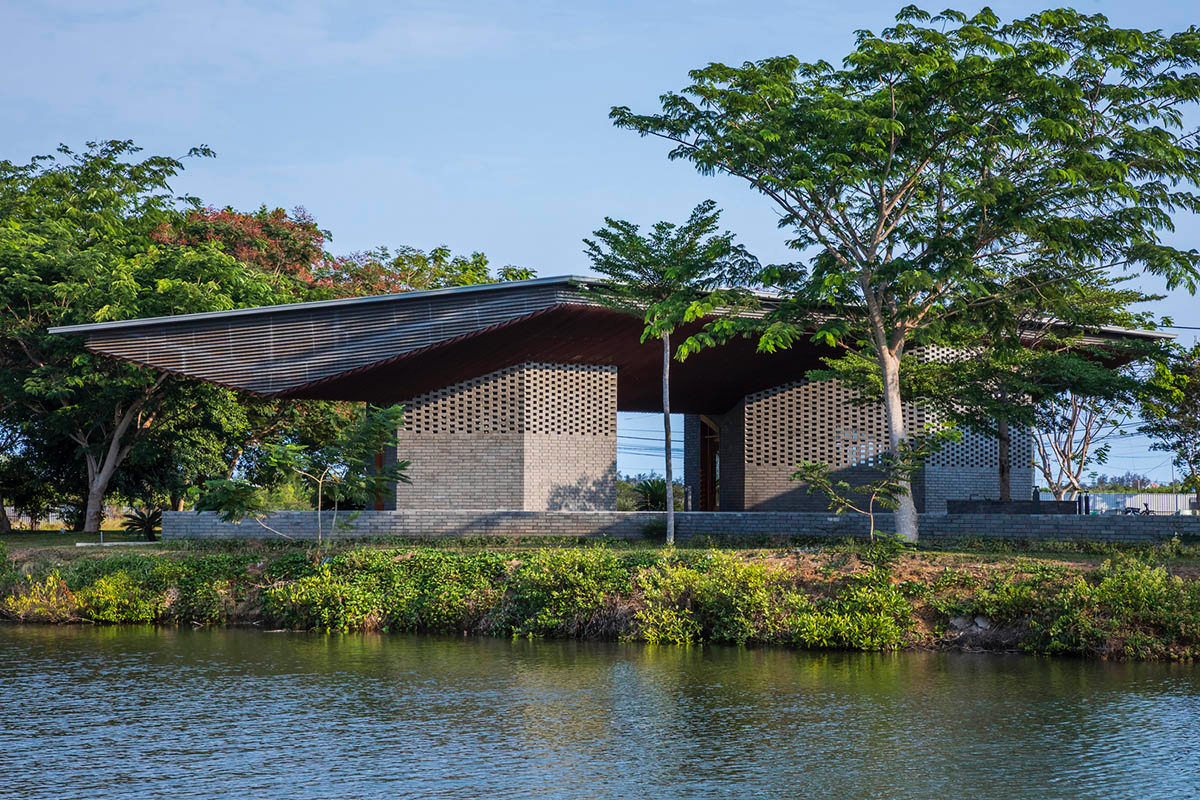
The architects describe the project as "a bird wings-shaped building". Can Gio Restaurant is designed like a pair of bird wings spreading across the Can Gio Mangrove Forest located in the South of Ho Chi Minh City (the natural space has been classified as one of the International Biosphere Reserves by UNESCO in 2000).
The wings forming a V shape frame up the view to the far horizon where the sun rises. A natural mineral stone platform leveling up the base emphasizes this clear angle of view towards the mangrove horizon and the view to the appealing circular green lake in the front. The project is located in a touristic and populated area.
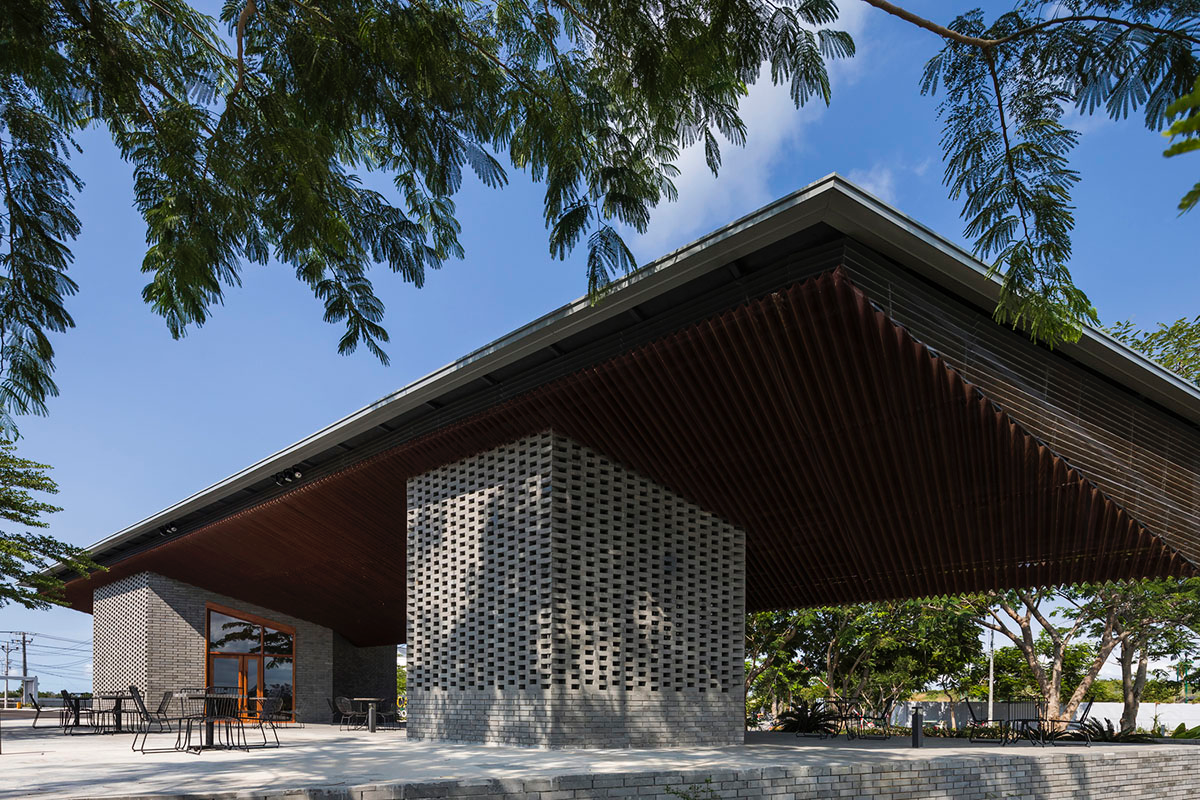
The project was designed as an open public space, protected from the typical sunlight and heavy rains of the region by two V-shaped roofs.
These large roofs function as a picture frame capturing all the beautiful surrounding landscape. This sophisticated design adapts perfectly to the program desired by the Investor.
 As the architects highlight, the aim of the project is to create a welcoming area to receive visitors and a multi-functional space to organize various kinds of events.
As the architects highlight, the aim of the project is to create a welcoming area to receive visitors and a multi-functional space to organize various kinds of events.

The main facilities of the venue are two dining rooms equipped with air conditioning, a large kitchen with storage and chilled room and sanitary areas.
This model complements the tourist planning which usually consisted of just hotels, resorts equipped with swimming pools, townhouses, and villas, to offer an opportunity to go relaxing out of HCM city on the weekends.

"The project must be able to cope with the strong sun that whitens everything around, heavy rains and thunderstorms coming from the East Sea, the dry wind," said DE-SO.
"The color of the project is inspired by typical local sand color and mangrove trees roots. The project uses also light gray color similar to the silt which highlights the saturated green vegetation of the mangrove."
"The base. Using the monolithic laterite stones to build the base in order to lift up the ground floor level and establish an architectural order so as to well anchor the house into the sandy and silty site," the architects added.

Ramps and stairs lead the way up to terrace. A central tree with ethereal foliage (Termilia Mantaly) brings shade and freshness to the terrace. The four buildings (pentagon) and the base are made of concrete covered with gray laterite stone. They are unitary.
This laterite is also used in massive stones of 10cm thickness to create the lattice wall for closed and air-conditioned dining rooms. At night the lattice plays as a Chinese lantern diffusing the saturated color on the walls of the interior spaces.

Constructing a building in the harsh tropical climate like the Can Gio region is a technical and ecological challenge, the pavilions are built with local Vietnamese materials and with the minimum of composite materials. The construction elements are elements of small sizes assembled.

Can Gio is a peninsula accessible by ferry, it is difficult to deliver materials by boat and deliveries are always limited to small quantities. It's about being strong, durable, withstanding heavy rain, the hot vertical sun, and skillfully taking advantage of the chill wind coming from the South China Sea.

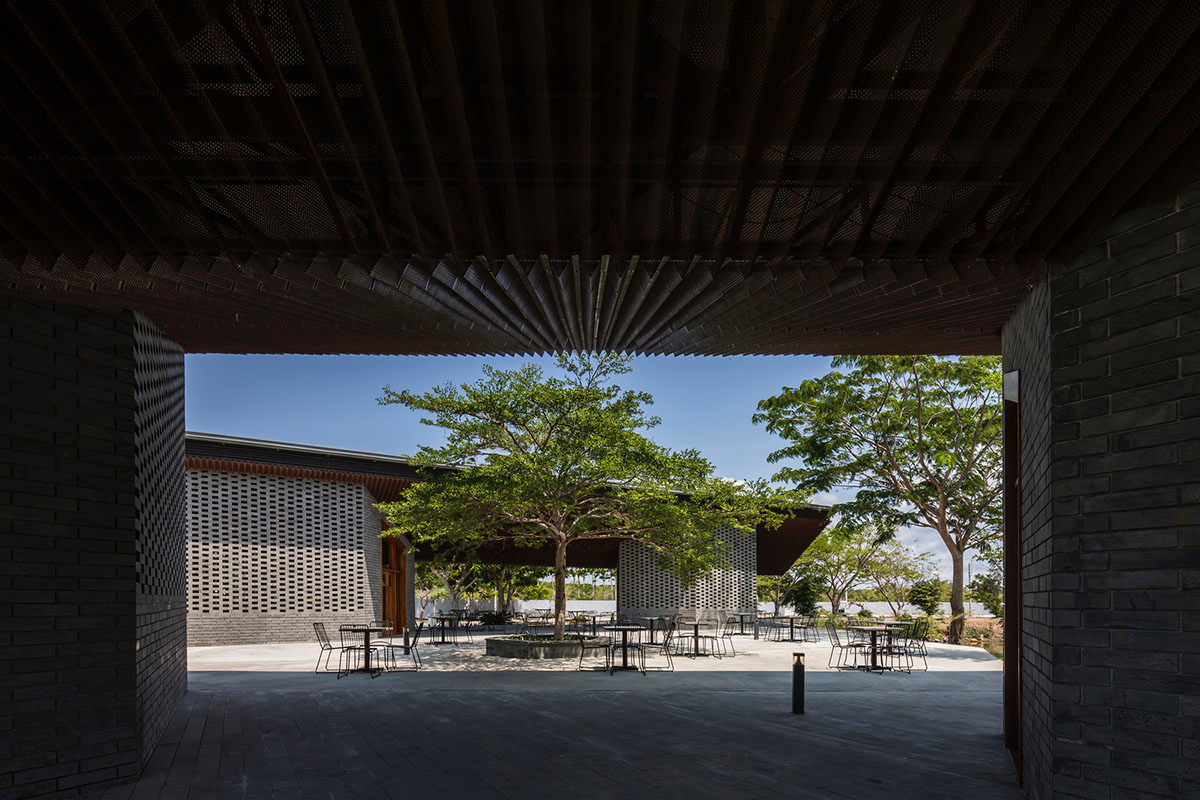


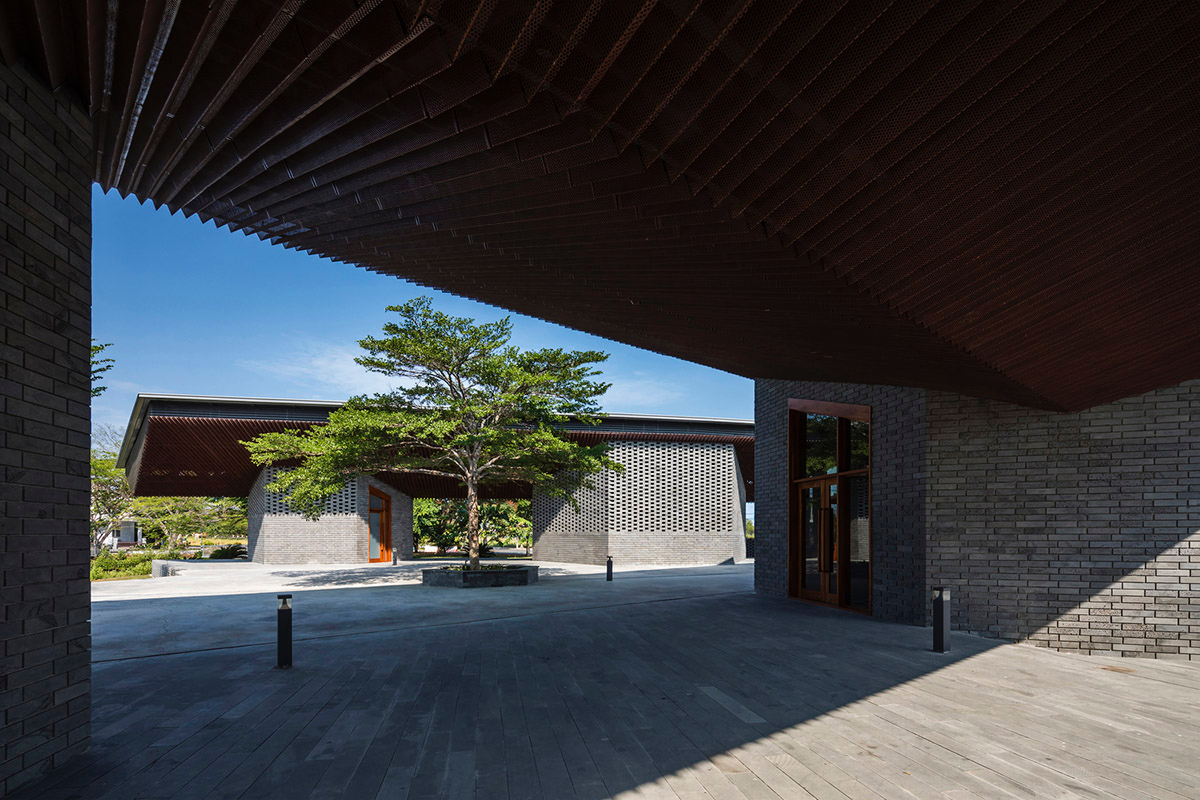



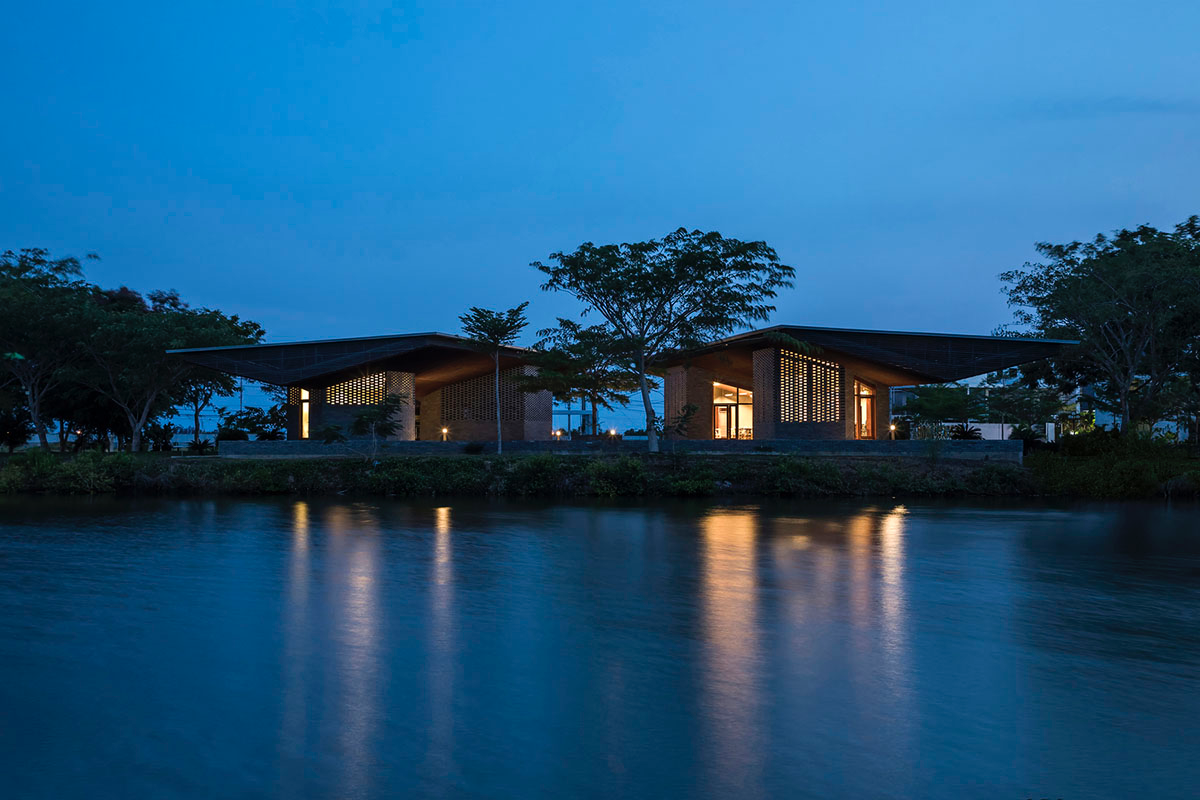

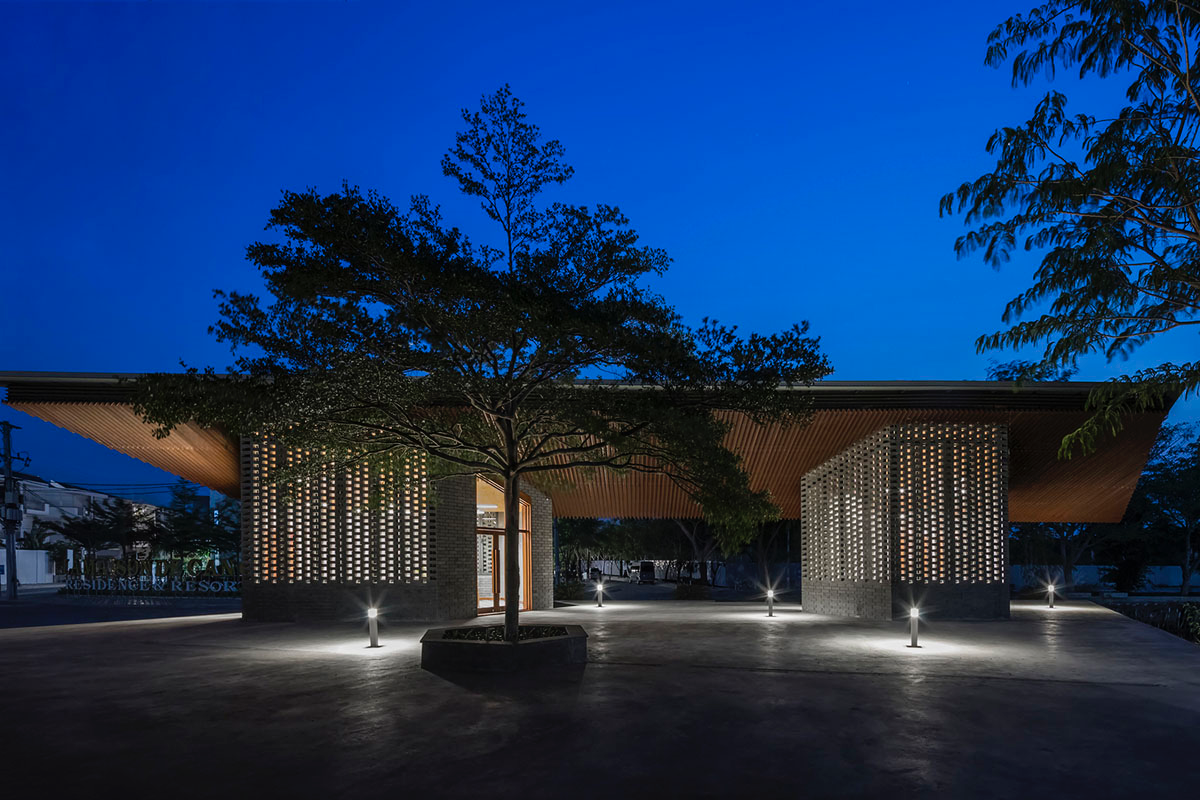

Floor plan
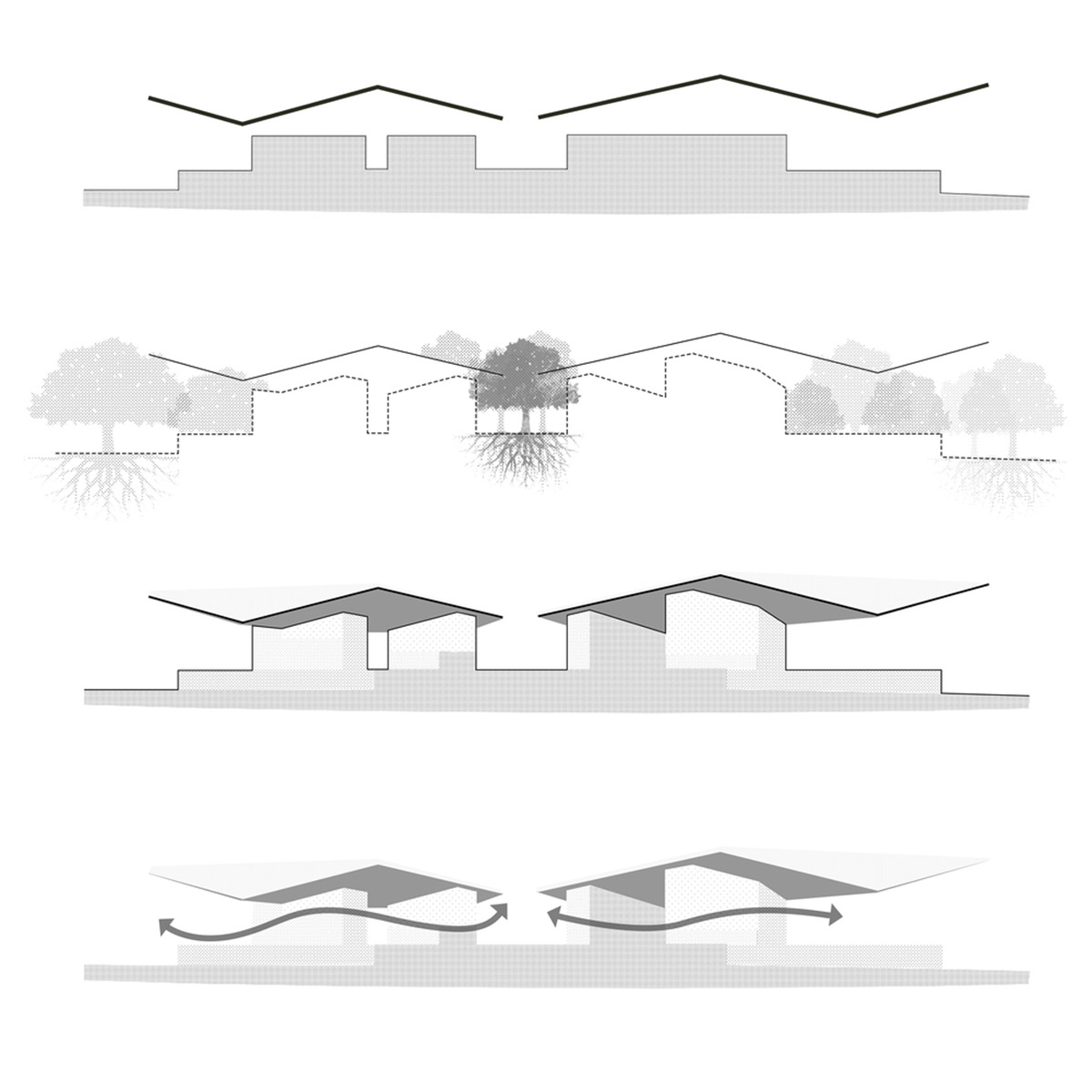
Diagrams
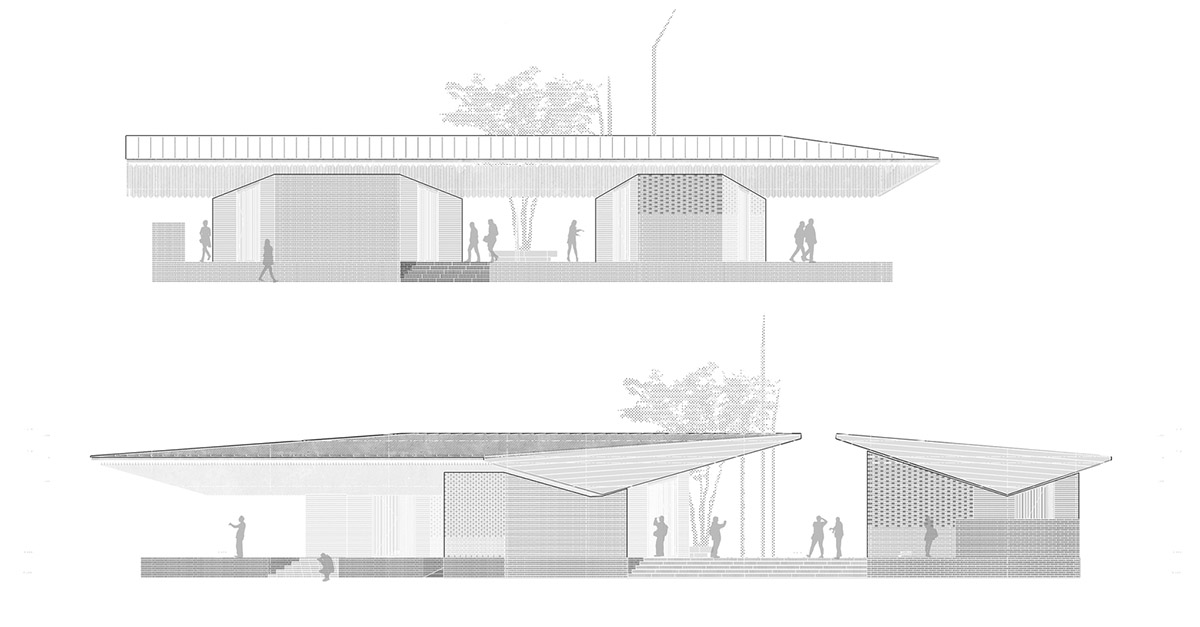
Elevations

Rendering
Project facts
Project name: Pavilion Can Gio
Architects: DE-SO
Location: Vietnam
Size: 350m2
All images © Hiroyuki OKI
> via DE-SO
